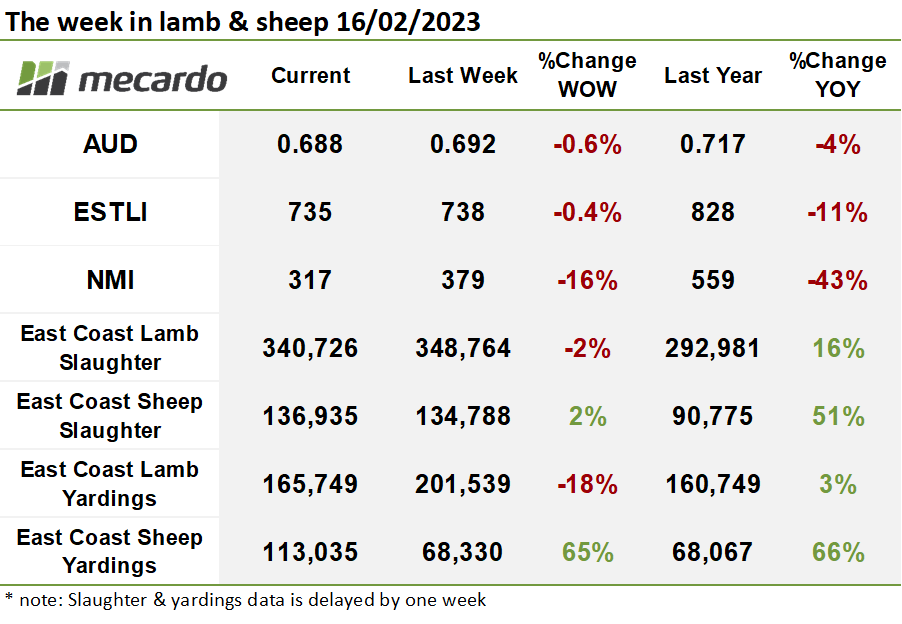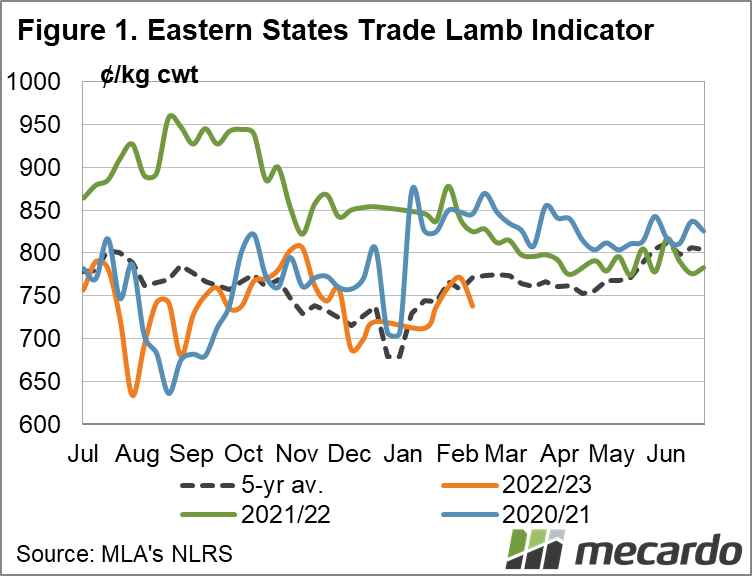Last week’s relative optimism about mutton prices was short-lived, with prices freefalling to levels seen a fortnight ago. Trade lamb prices held, however, restocker demand appears to be waning, with a big fall in the index being recorded. An increase in supply exacerbates the situation.
Hopes were dashed on the sheep front with the National Mutton Indicator (NMI) plummeting 61¢ (16%) over the course of the week to settle at 317¢/kg cwt as offerings across the country remained at the 75,000 head level.
The Eastern States Trade Lamb Indicator (ESTLI) eased 3¢ (<1%) for the week, closing at 735¢/kg cwt, gaining support from the lower supply, which dipped around 19% week on week. Demand for east coast restocker lambs appears to have softened, with the index falling a massive 47¢ (7%) week-on-week to close at 625¢/kg cwt, seeming to bow under the pressure of 16% higher supply compared to the prior week.
East coast heavy lamb prices went the other way however, lifting 8¢ (3%) to close at 796¢/kg, assisted by the support of a 12% fall in yardings compared to the week prior.
Reports out of Wagga suggested that a good quality offering kept prices more buoyant in that market; however, reduced export processor activity in mutton, and hence demand for sheep lead to a softer market. Ballarat prices were subdued by some poorer quality offerings in the trade weight specification. As such buying interest was distinctly thinner for sheep into a higher volume offering, resulting in a much cheaper trend. Reports from Forbes indicated that the sheep offering there was of fairly mixed quality, which would have contributed to the softer pricing trend.
On the demand side, last week’s slaughter numbers continue to impress, with volumes up 16% from year-ago levels. Sheep slaughter remains in relative overdrive. With prices for sheep looking shaky at the moment, here’s hoping that processors keep up the pace in the coming weeks.
The week ahead….
Export processors hanging back from the sheep market this week might be a sign that the orders taken recently might have been signed on the cheaper side. This suggests that international buyers were taking advantage of sharp prices; and that sheep demand is unlikely to come back at higher price points for a while yet. The theme of quality remains, with restocker bidders in particular remaining highly selective.
Have any questions or comments?
Click on graph to expand
Click on graph to expand
Data sources: MLA, Mecardo



